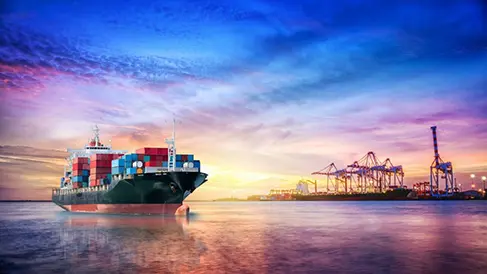Customer Overview
One client provides technology services to the maritime and education industries. Their flagship marine ERP software supports operations for enterprises of all sizes, including small marine businesses. As ERP maritime solutions are mission-critical and customer expectations continue to grow, this client engaged TenUp to modernize its marine ERP system. The objective was to future-proof the product with enhanced functionality, which required a fundamental ERP modernization and architectural transformation.
Project Overview
The client aimed to modernize its maritime ERP system by transitioning from a monolithic to a modular ERP microservices architecture. The primary goal was to achieve complete modularization—enabling each component to be developed, deployed, updated, and scaled independently. This shift would allow the company to sell individual modules, improve development efficiency, and enhance overall system flexibility. Additional objectives included ensuring independent scalability of services, improving system resilience to prevent full outages, and enabling distributed teams to work on separate modules without impacting the full marine ERP software ecosystem.
Challenges
To modernize the client’s monolithic ERP platform into a modular, microservices-based system, the TenUp team needed to overcome several architectural and implementation challenges:
- Understanding the existing marine ERP system structure and identifying logical boundaries for dividing it into independent microservices.
- Designing effective integration mechanisms between modules, balancing synchronous and asynchronous communication—to ensure reliable message delivery across the maritime ERP system.
- Breaking database-level foreign key dependencies across modules and defining strategies to manage shared or coupled data used by multiple services.
- Maintaining database consistency and managing distributed transactions without affecting performance or requiring UI changes, despite multiple REST APIs replacing a single endpoint.
- Implementing a unified approach to user authentication and authorization, including single sign-on (SSO) for both user-to-service and service-to-service communication.
Solution
We adopted a domain-driven approach and implemented a microservices architecture to modernize the monolithic ERP into a system that is independently scalable, secure, and maintainable.
- Applied Domain-Driven Design (DDD) to decouple modules and organize them into distinct Bounded Contexts, ensuring each could evolve, deploy, and scale independently. We began with a few core microservices and later refined the design by splitting larger ones into smaller, more focused services, resulting in a cohesive yet loosely coupled architecture.
- Clearly defined synchronous and asynchronous operations for all integrations. Used a request/response model with secured REST APIs for synchronous calls and a fire-and-forget pattern for asynchronous scenarios, supported by a highly available message queuing system.
- Managed database relations and consistency across microservices by removing foreign key constraints and applying derived tables synchronized through durable topics. Defined transactional boundaries using message queues to maintain system-wide data consistency. Built shared tables with synchronized subsets of master data and introduced a separate microservice for shared data accessible over secure REST APIs.
- Introduced an API Gateway to serve as a unified entry point for all client requests. The gateway efficiently routes or aggregates requests across multiple services, simplifying client interactions and improving overall system manageability.
- Added an Identity Provider (IdP) microservice to handle authentication and authorization for both user-to-service and service-to-service communication. Integrated OpenID Connect (3-Legged Protocol) for user-level authentication and OAuth 2.0 (password grant type) for controlled service-level access.
Benefits
With ERP modernization using microservices architecture, our client can now meet evolving customer needs with a more flexible, scalable, and marine ERP software system.
- Expanded business opportunities through modular architecture, enabling individual module sales based on customer needs.
- Achieved unparalleled system resilience—99.99% uptime—by isolating modules within the ERP microservices architecture to prevent cascading issues and maintain business continuity.
- Simplified deployment and upgrade processes, allowing independent module updates and faster troubleshooting, contributing to 20% faster product development.
- Enhanced scalability and performance with dynamic scaling and optimized resource utilization, supporting 24-hour round-the-clock operations.
- Minimized impact on the client-side codebase by implementing all major changes at the backend.
- Improved team communication and productivity with independent module ownership and streamlined collaboration.
Technology
- Domain-Driven Design (DDD)
- Microservices architecture
- REST APIs
- Message queuing system
- Derived tables & durable topics
- API Gateway
- Identity Provider (IdP)
- OpenID Connect (3-Legged Protocol)
- OAuth 2.0 (password grant type)
Industry
- Marine/Maritime



